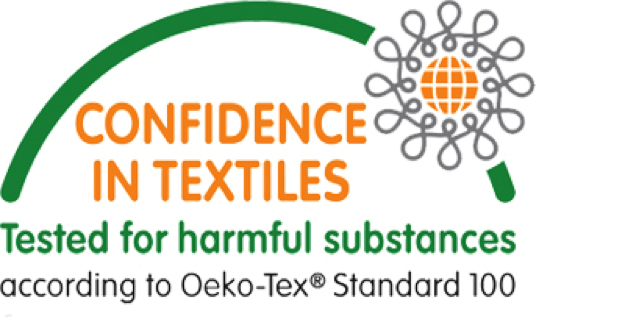By Laura Dolgy (see bio below)
If you didn’t already know, eczema comes in many different forms. Although eczema is known for being itchy and dry, it is also known for causing sores, welts, redness, and scaly skin. If you’ve been frantically searching the web looking to classify your type of eczema and find the best treatment for it, but have been unsuccessful, you’ll want to read this post! In it we breakdown the most common forms of eczema, as well as the best natural treatment for eczema by type.
Please keep in mind that although these treatments can relieve eczema, we are in no way medical professionals. If you’re experiencing severe eczema symptoms like fever or an infection, it is best to seek medical advice immediately.
Types of Eczema – which form of eczema do you have?
1. Itchy/Red/Dry Eczema
This is probably one of the most common forms of eczema. If you find yourself with patches of chronically itchy, dry eczema on your hands, neck, face or legs then you know all too well how irritating and embarrassing this type of eczema can be. Not to mention that relentless scratching!
The best type of treatment for this eczema type is both healing balms and creams to penetrate and successfully moisturize the skin. One of our favorites is Organic Manuka Skin Soothing Cream which is thick in texture and rich in emollients, making it an excellent treatment for eczema due to its soothing and calming nature. For facial eczema that is red, dry or itchy, you can opt for a spray (for easier application) that contains soothing ingredients like honey, calendula oil or aloe. This Organic Aloe Vera Skin Soothing Spray helps beat the itch with its cooling properties without being greasy.
2. Red/Weeping Eczema
Although many eczema sufferers are burdened with the more common itchy and red skin, others experience red and oozing skin as well. This eczema type is characterized by patches of angry and crusty skin that can also burst and ooze with pus. Not to mention it can be beyond itchy and irritating. For those going through Topical Steroid Withdrawal, the skin usually falls into this category.
For this type of eczema, you’re going to want a natural balm or ointment that doesn’t irritate the skin and that will help fight off the infectious nature of open skin. If your skin is blistering, using EczeHerbal #1 oozing eczema treatment will help wonders. This ointment is formulated using Chinese herbs, GMO free and safe for both topical use and if accidentally ingested. Plus – it can be used on pets! We also love the Hot Skin Soother for red eczema rashes. Because this type of eczema creates open sores, you’ll want to go for a treatment that is both anti-bacterial and anti-inflammatory. Using a Pine Tar Soap that does not contain creosote will help soothe and heal itchy skin as well.
Read More: 5 Tips to Heal your Weeping Eczema Naturally.
3. Thick/Scaly Eczema
Similarly to dry eczema, this type is characterized with thick and scaly patches of skin that can either be itchy or just plain embarrassing. The patches end up thickening over time, causing a crocodile skin type effect.
To treat thickened dry skin, you’ll want to opt for a cream or ointment that not only moisturizes, but also penetrates the skin. Emily Skin Soothers for Thick, Dry Eczema is a great treatment for this type of eczema. Not only do the herbs in the formula promote circulation and accelerate healing, but it was formulated with scaly eczema and psoriasis in mind. Grass Fed Tallow Balm is also an excellent moisturizer and is extremely nourishing for very dry and scaly skin. Looking for an easy treatment for eczema you can use in the shower? This Grass Fed Tallow Soap is excellent for every one of all ages, including those on a Paleo or GAPS diet and can be used on sensitive and allergy prone skin as well.
4. Psoriasis
Although not technically a type of eczema, psoriasis is often confused with eczema. Psoriasis is an autoimmune disorder (which eczema is now often being labeled as well) in which the body’s immune system produces inflammation and damages healthy skin tissue. This condition affects several parts of the body such as the face, palms, scalp and genitals, but it can also appear widespread.
The best natural remedies for psoriasis have extra moisturizing properties to penetrate the characteristic thick scales that identify this skin condition. The products recommended for Thick/Scaly Eczema will do just the trick in this case too – take a peek at those just above.
For bathing, Emily Skin Soothers Natural Body Wash is extremely gentle and soothes the driest skin. It also does not contain chemicals or fragrance, so it is affective for allergy or sensitive prone skin as well. Do you prefer a soap in bar form? Try Emily Skin Soothers Soap!
Interested in learning more about psoriasis? Check out our post: Psoriasis is Much More Than a Skin Disease.
5. Baby Eczema
Sweet, delicate skin deserves extra special care, so we gave baby eczema it’s own category. With all forms of baby eczema comes parental panic and anxiety. Although there are many different types of baby eczema such us baby seborrhea, cradle cap, oozing eczema and more, most of them are characterized by red, angry and itchy skin all over the body. The following eczema treatments for babies should work wonders.
For hot, angry baby skin, Emily Skin Soothers for Severe Diaper Rash can be doubled up as an ointment for diaper rash and other forms of dermatitis. It also contains beeswax that acts a barrier, as well as an antiseptic which is great for any baby eczema treatment. For babies with eczema that is dry, cracked or sensitive, using a calendula based ointment like Organic Calendula Salve is a great option. Not only is it super soothing, yet it contains a ton of vitamins, antioxidants, natural enzymes and more!
Although there are many forms of dermatitis, the treatment for eczema doesn’t need to be complicated! These suggestions are one step to relief, but if you really want to heal your skin, you’ll want to heal from within by first taking a look at your diet. Many of us don’t realize that what we put into our bodies sometimes causes the most issues externally. The Eczema Cure is a great eBook based on eliminating common trigger foods and adding gut healing foods, so that you can start healing your skin naturally today.
Not sure which type of eczema you have? Check out How to Determine Which Type of Dermatitis You Have.
Want to keep and save these tips for later? Save the pin below:

Bio: Laura is a contributor and content developer for It’s An Itchy Little World. She is in no way a medical professional. Her comments, suggestions, and reflections are not intended to replace any medical advice. Always seek the help of a medical professional before undertaking any diet or lifestyle changes. Please see It’s An Itchy Little World’s disclaimer for information about affiliate links and more.
The post How to Choose the Best Treatment for Eczema By Skin Type appeared first on itchylittleworld.com.
itchylittleworld.com







